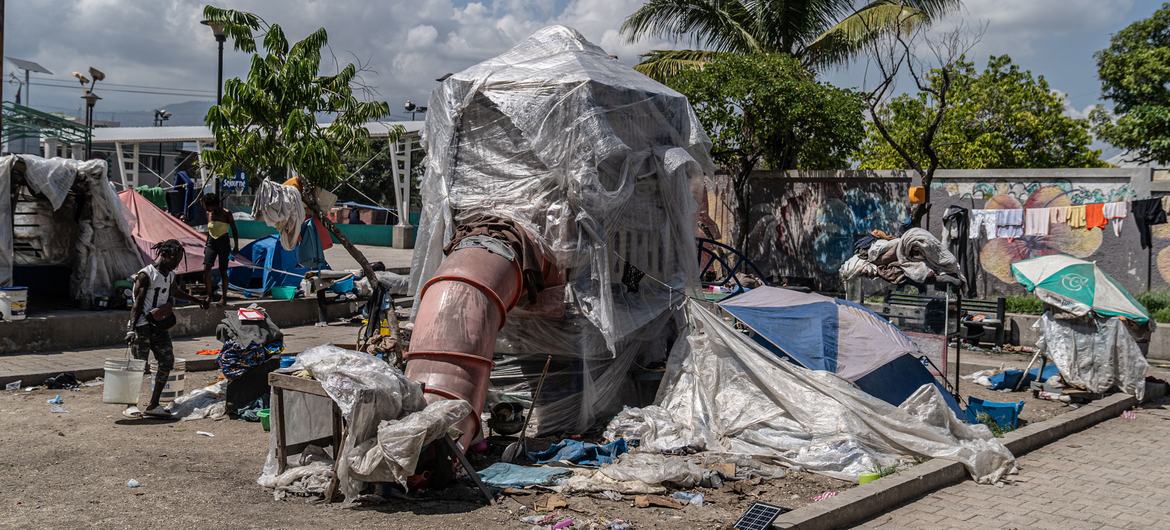Ministers and delegates from 54 African nations meet in Cairo at the 15th Session of the African Ministerial Conference on the Environment (AMCEN), issued Friday, the Cairo Declaration which reaffirmed their resolve to reach a binding climate change agreement that reflects the continent’s priorities and aspirations at the Paris talks, later this year. The Declaration also spotlights the need to improve the management of Africa’s abundant natural resources and the integration of the inclusive green economy in development planning.
AMCEN President and Minister of Environment of Egypt, Dr. Khaled Fahmy said, “The Cairo Declaration covers a wide range of priorities for the continent. From climate change and natural resources management to the illegal trade in wildlife and the integration of the inclusive green economy across sectors. African countries are showing solidarity and a determination to play a positive and responsible role in support of sustainable development, building resilience and poverty eradication.”
Stressing Africa’s vulnerability to the effects of climate change, in particular the adverse effects on ecosystems, food production, and social and economic development, Ministers agreed to support an agreement in 2015 that provides parity between mitigation and adaptation – noting the increased burden for adaptation in developing countries.
They indicated the agreement needs to ensure that the mitigation ambition keeps global temperatures well below 1.5°C from pre-industrial levels, by the end of the century.
The Cairo Declaration calls for a global goal for adaptation which takes into account adaptation needs and associated costs, including support for developing countries, while recognizing the need to up adaptation investments in developing nations.
The science shows that Africa is the continent where a rapidly changing climate is expected to deviate earlier than across any other continent from “normal” changes; making adaptation a matter of urgency.
The second edition of the Africa Adaptation Gap report indicates that extensive areas of Africa will exceed 2°C by the last two decades of this century, relative to the late 20th century mean annual temperature. This would have a severe impact on agricultural production, food security, human health and water availability.
In a 4˚C world, projections for Africa suggest sea levels could rise faster than the global average and reach 80 cm above current levels by 2100 along the Indian and Atlantic Ocean coastlines, with particularly high numbers of people at risk of flooding in the coastal cities of Mozambique, Tanzania, Cameroon, Egypt, Senegal and Morocco.
Under these scenarios, adaptation costs would reach US $50 billion annually by mid-century.
“The only insurance against climate change impacts is ambitious global mitigation action in the long-run, combined with large-scale, rapidly increasing and predictable funding for adaptation. Investment in building resilience must continue to be a top funding priority, including as an integral part of national development planning,” said Achim Steiner, UN Under-Secretary-General and Executive Director of the United Nations Environment Programme (UNEP).
“The coming months will determine how Africa’s development priorities and climate change common position are articulated and reflected in the context of global negotiations. The work undertaken here by the AMCEN will influence the future of generations to come. It is a grave responsibility that also carries myriad opportunities for the future welfare, prosperity, and development of the continent and its people,” he added.
Managing Africa’s Natural Capital and Transitioning to a Green Economy
African Ministers agreed to optimize the use of natural resources for sustainable development and poverty alleviation. They also expressed their resolve to integrate the inclusive green economy into development planning by mobilizing funds, creating jobs and specially targeting small and medium-sized enterprises.
“We need to step up regional and national efforts and to consider natural capital valuation in decision-making in order to harness the full potential of Africa’s rich endowments and to employ the competitive advantage offered as an engine for inclusive economic growth,” said AMCEN President, Khaled Fahmy.
Africa, the world’s second-largest continent, holds a huge proportion of the world’s natural resources, both renewable and non-renewable. Ecosystem services such as water, hydrologic regulation, soil fertility, biodiversity, climate change adaptation etc. underpin Africa's economic sectors like energy, tourism and agriculture.
The new Green Economy Africa Synthesis study, conducted across 10 African countries, shows that despite real Gross Domestic Product (GDP) increases across Africa of, on average, 5.1 per cent a year over the last 10 years, social and economic challenges remain acute: 48.5 per cent of Sub-Saharan Africans live in extreme poverty, 76 per cent of households are not connected to the grid, and 70 per cent do not have access to improved sanitation.
The report makes clear that green investments can not only drive economic growth faster than business as usual investments, but represent a valuable opportunity for Africa to conserve the natural foundation wealth on which economies, lives, and livelihoods depend.
Enormous sustainable, renewable, and untapped resources exist on this continent. Africa receives 325 days per year of sunlight and is using less than 7 per cent of its hydroelectric potential, and less than 2 per cent of its geothermal capacity.
Many African countries are beginning to tap into this potential:
- Green investments in renewable energy development in Burkina Faso are expected to yield an increase in electricity generation from renewables 180 per cent greater than business as usual investments.
- In South Africa, a new Green Economy Accord is set to create 300,000 green jobs by 2020.
- In Egypt, a shift to a a green economy pathway could lead to annual savings of over US $1.3 billion in the agriculture sector, and US $1.1 billion in the water sector, as well as a 13 per cent reduction in CO2 emissions, and a 40 per cent reduction in water consumption.
“What is required, if the green economy is to effectively take off across Africa, is to scale-up investments and adopt the right mix of policy, incentives, enforcement, education capacity development and informational tools,” said Mr. Steiner.
Common Strategy on Combating the Illegal Trade in Wildlife
African Ministers also decided to adopt a common strategy on the illegal trade in wildlife, to be discussed at the International Conference on Illegal Trade, to be held in Brazzaville in April 2015.
The strategy will provide an improved understanding of the drivers of demand and supply and the development of the tools required to strengthen action to reduce demand and supply.
It also calls for the establishment of inter-regional cooperation mechanisms and an improved understanding of the role of indigenous communities in addressing and combating the illegal trade.
Once an emerging threat, wildlife and forest crime today has transformed into one of the largest transnational organized criminal activities alongside drug trafficking, arms, and trafficking of human beings. Beyond immediate environmental impacts, the illegal trade in natural resources is depriving developing economies of billions of dollars in lost revenues.
Combined estimates from the Organization for Economic Co-operation and Development (OECD), the United Nations Office on Drugs and Crime (UNODC), CITES, UNEP and INTERPOL place the mo netary value of all environmental crime - which includes logging, poaching and trafficking of a wide range of animals, illegal fisheries, illegal mining and dumping of toxic waste - at between US $70 and US$213 billion each year. This compares to global Overseas Development Assistance of around US $135 billion.
A UN-Interpol report released last year finds that wildlife and forest crime plays a serious role in threat finance to organized crime and non-state armed groups, including terrorist organizations.



